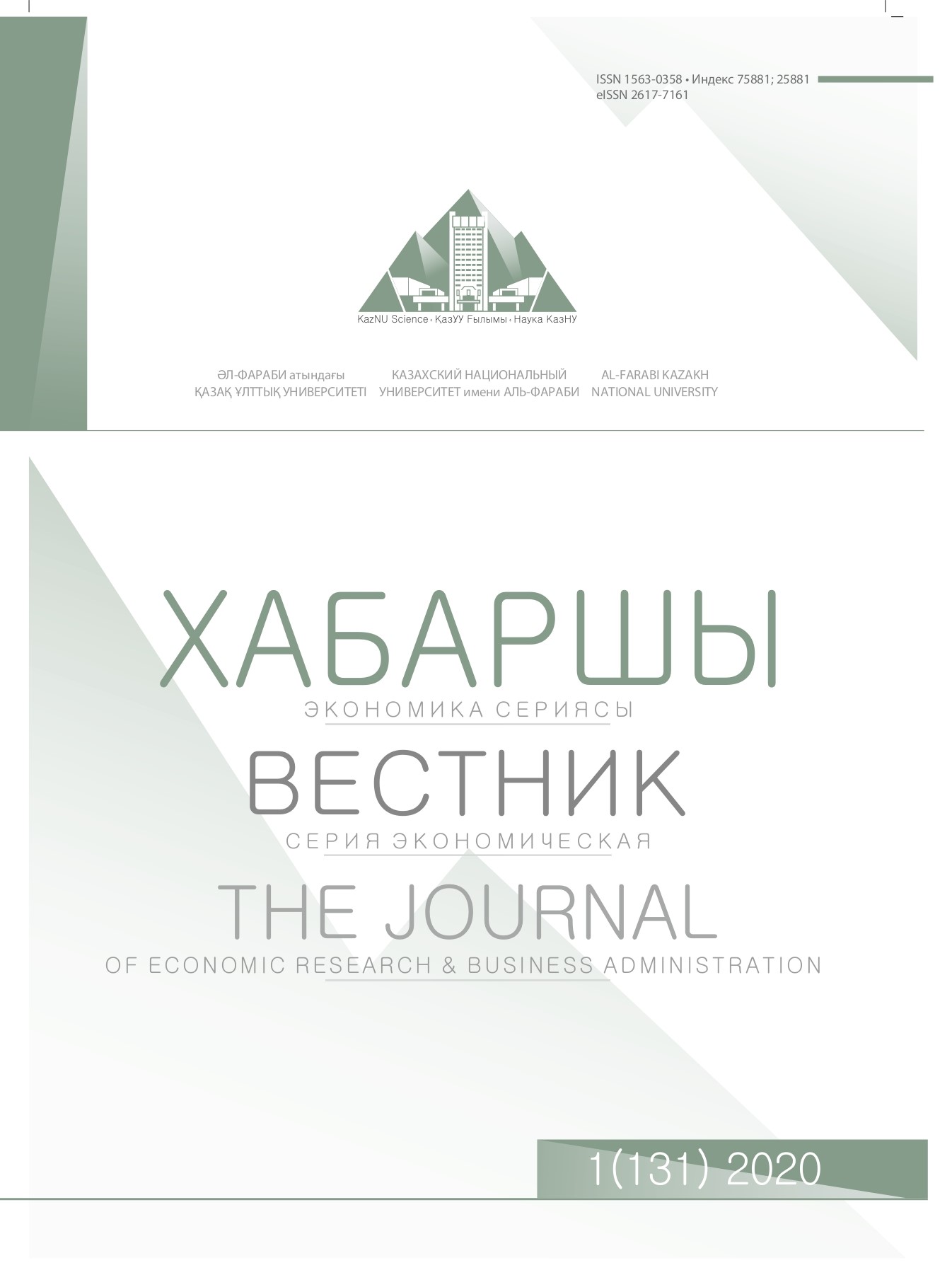Testing Quiet Life Hypothesis in the Banking Sector
DOI:
https://doi.org/10.26577/be.2020.v131.i1.05Abstract
The current research continues the series of studies aimed to analyze the issues in regards to bank
efficiency in the Baltic banking market. The goal of the current paper is to empirically test the Quiet
Life Hypothesis (QLH) and to investigate the relationship between market concentration and efficiency
in the banking sector of Latvia, Lithuania and Estonia. Two QLH-related hypotheses are stated for the
research purposes.
To achieve the established goal, the authors run a multiple regression analysis, using efficiency of
an individual bank as a dependent variable. In turn, independent variables include market concentration
proxied by Herfindahl-Hirschman Index (HHI) and bank-specific measures, such as market share, profitability
and productivity.
Efficiency scores for individual banks were estimated applying Data Envelopment Analysis (DEA).
Study is based on the sample data of 33 banks operating in the Baltic countries, covering the period of
2007-2013 (227 observations). Data processing was made with application of DEAFrontier and SPSS
software.
In the result of the performed analysis the stated hypotheses are rejected. Thus, there is no empirical
evidence that market power, and consequently, market concentration in the Baltic banking sector
negatively impacts the efficiency of individual banks.
At the same time, researchers should pay special attention to two conceptual issues in the process of
developing methods for regulating Bank liquidity: the size of the Bank’s equity capital and the conditions
of the external environment.




